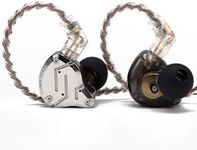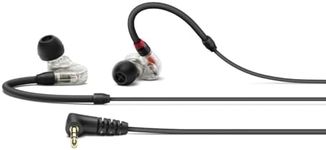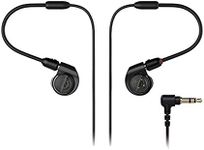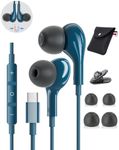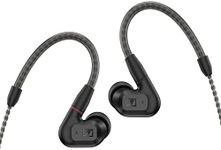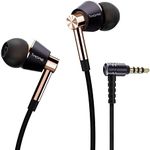Buying Guide for the Best Wired Earbuds
Choosing the right wired earbuds can make a big difference in your daily listening experience, whether you use them for music, calls, or watching videos. It's important to think about how and where you'll use your earbuds most often, as this will help you focus on the features that matter most to you. By understanding the key specifications, you can find a pair that fits comfortably, sounds great, and lasts a long time.Sound Quality (Frequency Response, Drivers)Sound quality is determined by how well the earbuds reproduce audio, and this is often described by the frequency response and the type or size of drivers used. Frequency response tells you the range of sounds the earbuds can produce, usually measured in hertz (Hz). A wider range means the earbuds can play deeper bass and higher treble. Drivers are the small speakers inside the earbuds, and larger or more advanced drivers can often deliver clearer and richer sound. If you love deep bass or crisp vocals, look for earbuds with a wide frequency range and good driver technology. If you mostly listen to podcasts or make calls, you may not need the widest range.
Comfort and FitComfort and fit are about how the earbuds feel in your ears, which is crucial for long listening sessions. Earbuds come in different shapes and sizes, and many include various ear tip sizes. Some are designed to sit just inside the ear, while others go deeper for a more secure fit. If you plan to wear them for hours or during activities like running, look for options with multiple ear tip sizes or ergonomic designs. If you only use them occasionally, a basic fit may be enough.
Cable Quality and LengthThe cable quality affects durability and how easily the earbuds tangle, while the length determines how much freedom you have to move. Thicker, braided, or reinforced cables tend to last longer and resist tangling. Cable length usually ranges from about 1 meter to 1.5 meters. If you use your earbuds with a phone in your pocket, a shorter cable is fine. For use with a computer or when you need more reach, a longer cable is better. Choose based on your typical listening setup.
Microphone and ControlsMany wired earbuds include a built-in microphone and remote controls for calls and music playback. The microphone lets you make calls or use voice assistants, while the controls allow you to adjust volume, skip tracks, or answer calls without touching your device. If you often take calls or want hands-free control, look for earbuds with an in-line mic and remote. If you only use them for music, this feature may be less important.
Connector TypeThe connector is the plug that attaches to your device, most commonly a 3.5mm audio jack. Some newer devices may require USB-C or Lightning connectors. Make sure the earbuds you choose are compatible with your phone, tablet, or computer. If your device lacks a headphone jack, you may need an adapter or earbuds with the right connector. Always check your device before buying.
Noise IsolationNoise isolation refers to how well the earbuds block out external sounds using their physical design. This is different from active noise cancellation, which is rare in wired earbuds. Good noise isolation helps you focus on your music or calls, especially in noisy environments. If you use your earbuds in busy places like public transport, look for models with snug-fitting ear tips that seal your ear canal. If you need to stay aware of your surroundings, a looser fit may be better.
Durability and Build QualityDurability is about how well the earbuds and their cables withstand daily use, including being pulled, dropped, or exposed to sweat. Look for sturdy materials, reinforced cable joints, and water or sweat resistance if you plan to use them during exercise. If you are rough on your gear or use earbuds outdoors, prioritize build quality. For light, occasional use, standard models may suffice.
